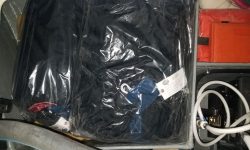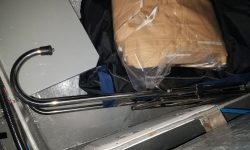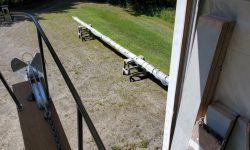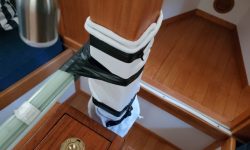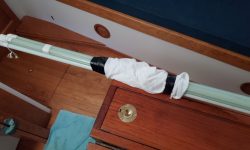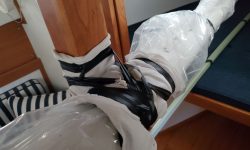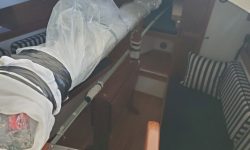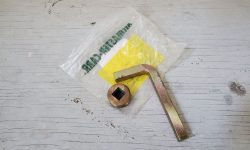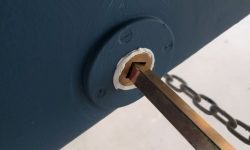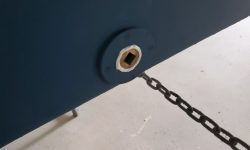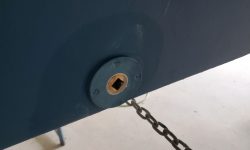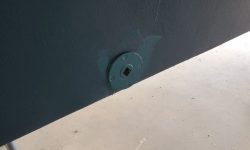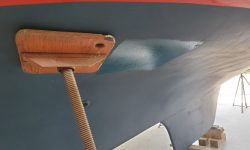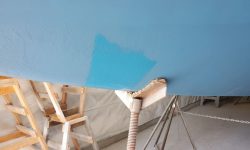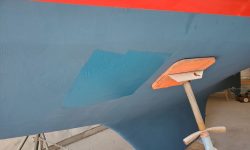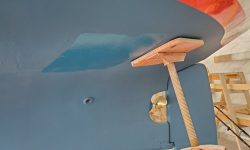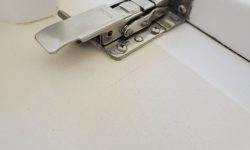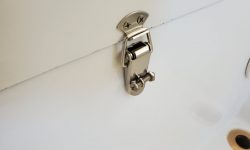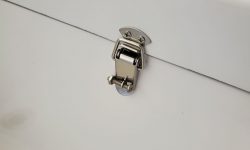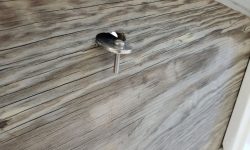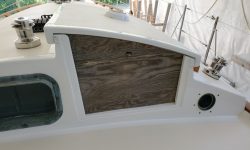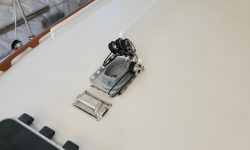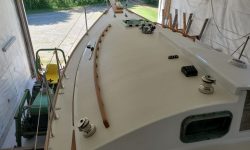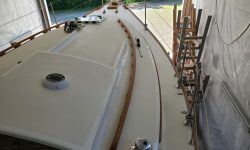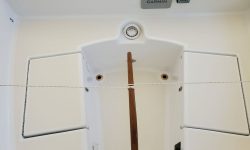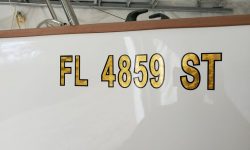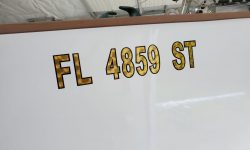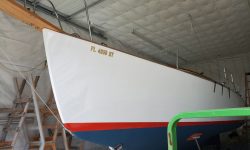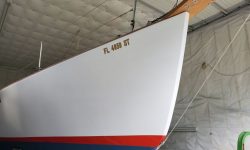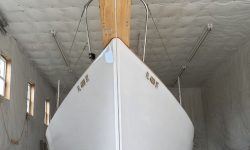August 13, 2020
Scupper 262
At the end of March and with the completion of the project, I prepared the boat generally for transport to the owner’s new location in Florida. I packed various loose gear into several lockers in the boat, and filled the cockpit lockers with sails old and new, stowing everything carefully to prepare for the boat’s long over-the-road journey ahead.
With the country embroiled in the various lockdowns and restrictions related to the advent of COVID-19 in March, along with additional complications at the owner’s end and this country’s utter inability to better handle (or in certain circles even properly acknowledge) the spread of the virus, transportation of the boat was delayed for several months, during which time I maintained the boat indoors for protection, keeping the batteries topped off with weekly charging.
Towards the end of the summer, the owner, having moved to Florida and taken care of the boat registration and other requirements, scheduled a transport date of August 24. With this date a few weeks ahead, I took care of a short list of final preparations, including storing the full-length mainsail battens and main boom in the cabin, all carefully secured and chafe-protected within. I also moved the mast around to the front of the shop where it’d be readily accessible for the truck. Back in March, I’d wrapped the spars in plastic for protection during transportation; with the delay in shipment, I covered the stored mast with additional heavy tarps for extra protection and to keep the clear plastic from falling apart in the sun and weather, but now I removed the excess tarps.
Also, at the owner’s request I installed the garboard drain plug in advance, so the commissioning yard wouldn’t have to worry about its proper installation. I used a small amount of sealant on the threads, and screwed in the plug tightly before coating the plug with bottom paint when I took care of the jackstand patches. Since this particular hard bottom paint had a limited time it could be exposed before launching, the owner chose to have the commissioning yard apply a second and final coat over the whole bottom in Florida.
On deck, I made sure all the locker lids and companionway were secured properly, and added small bolts through the locking holes just to ensure the latches couldn’t spring open unintentionally. With all loose gear, canvas covers, and so forth stowed below, and the tiller secured, the boat was ready above and belowdecks for her relocation. Note that for transport purposes, I chose to use the ugly old plywood companionway drop board, keeping the newly-made versions safely in the cabin.
With the new registration from the owner, I had a set of numbers made up for the bow of the boat, using the same gold leaf and dark blue outline as with the name on the transom, but in a basic block to satisfy the display requirements. With an indicated state requirement to display properly the HIN on the transom–if there’d ever been a stamped or molded number there it was long gone by the time I started the project–I had a set of the numbers made up from vinyl and installed them on the upper starboard side of the transom as well.




